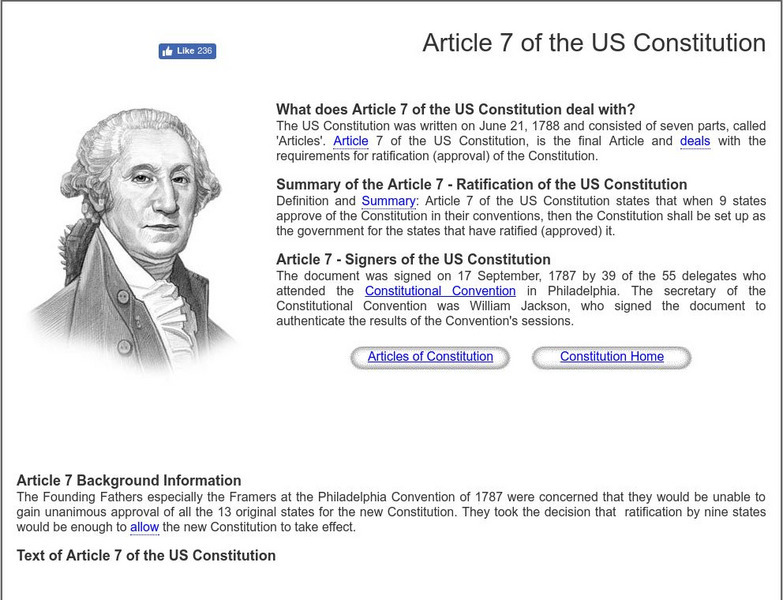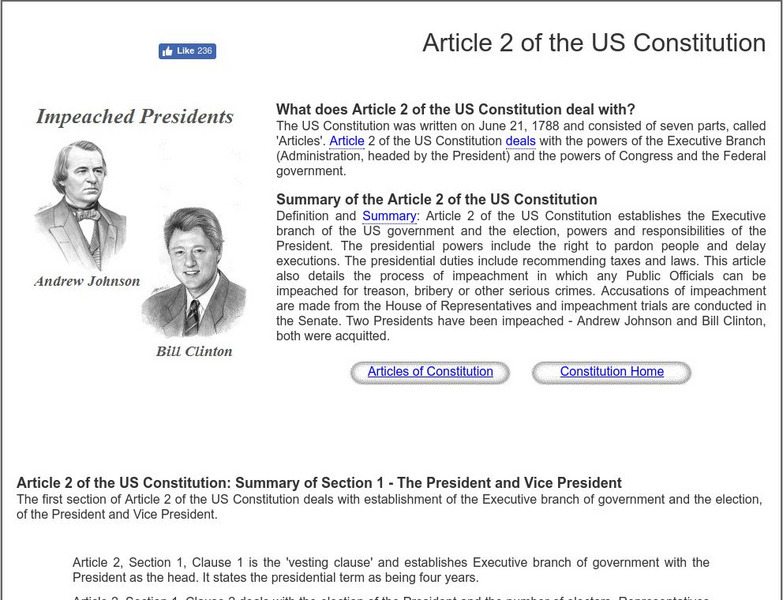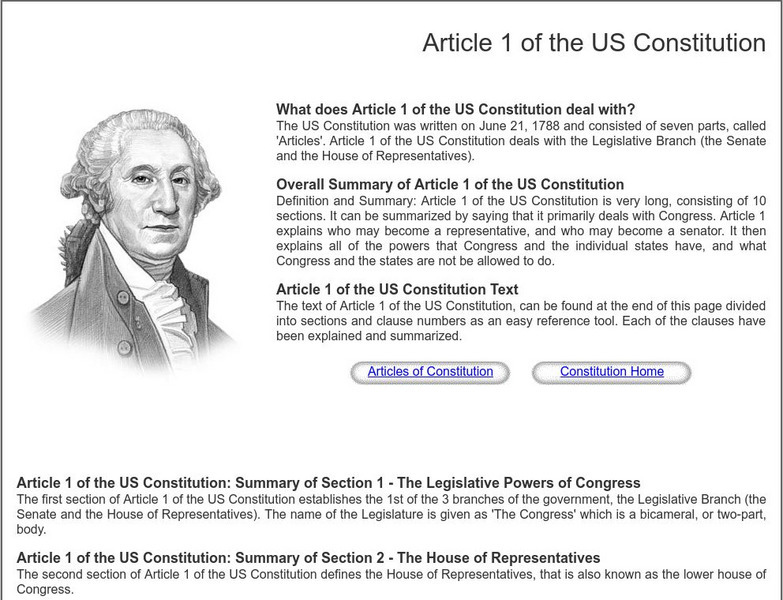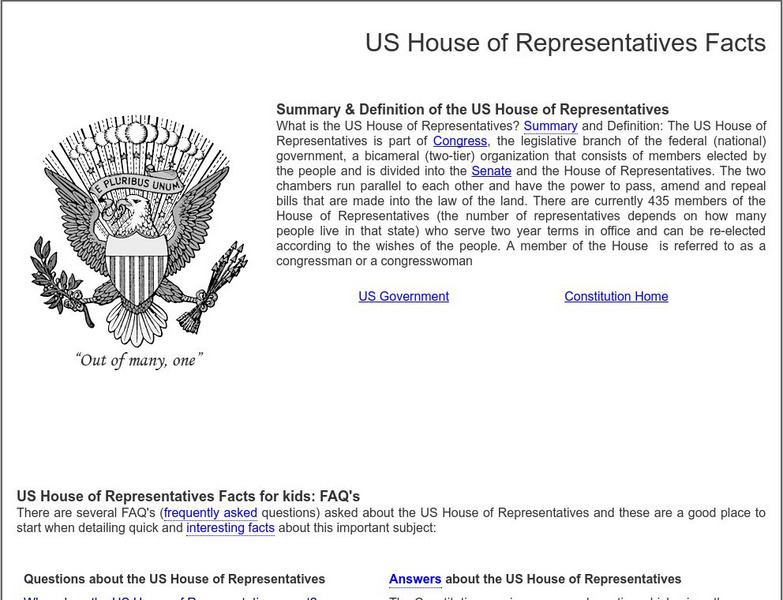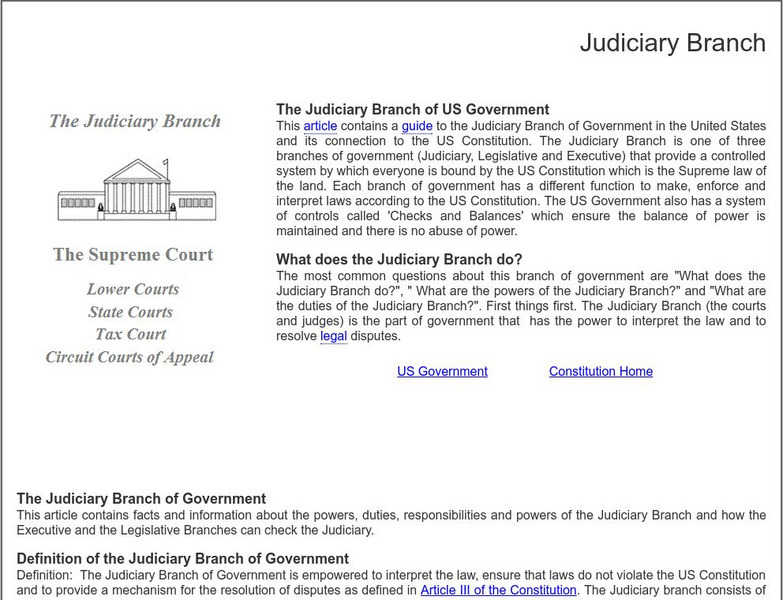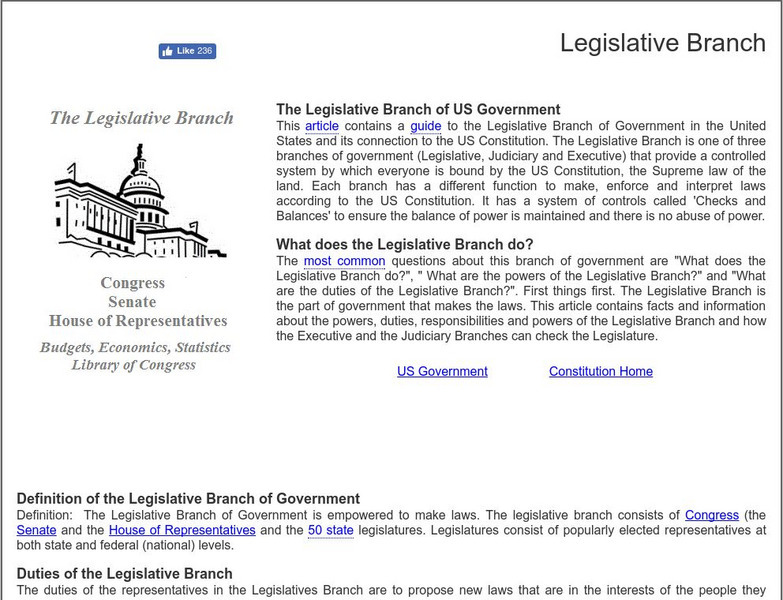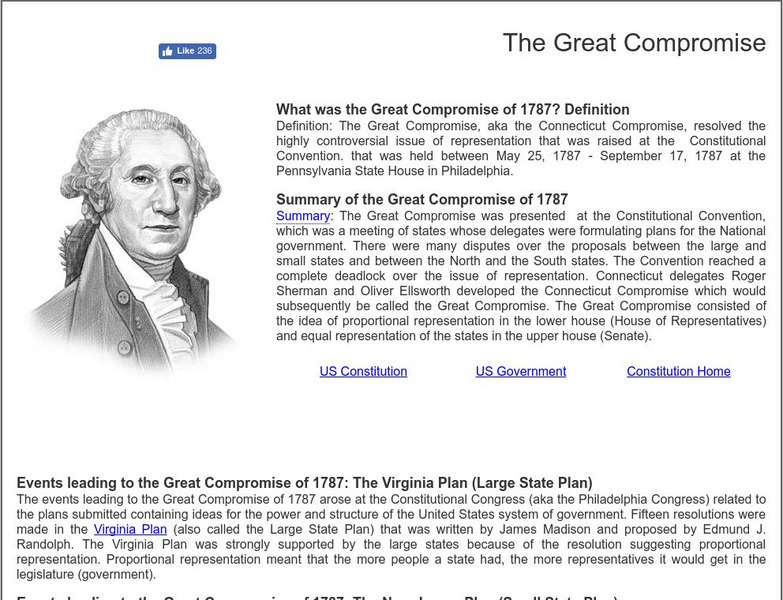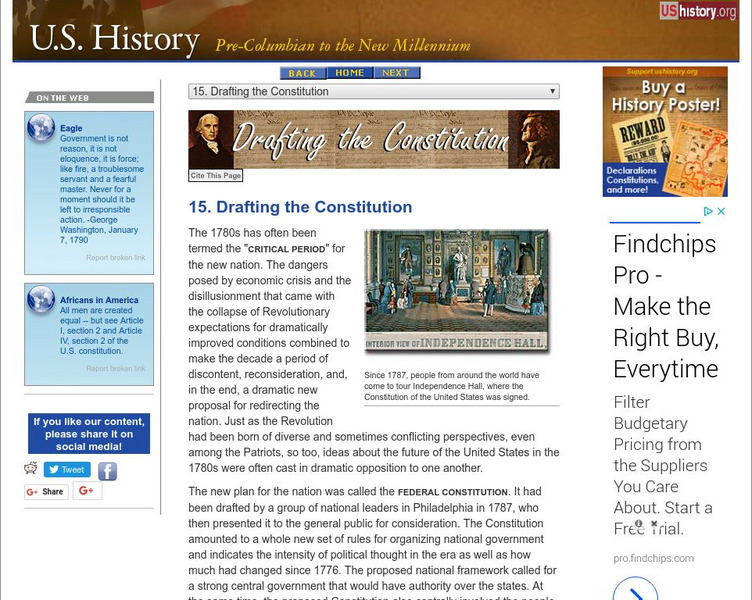US Government Publishing Office
Ben's Guide to u.s. Government: Election of the President & Vice President: Electoral College
Provides information on the Electoral College and how we use this system to elect the President of the U.S. Features links to much more information on the election.
US Government Publishing Office
U.s. Government Publishing Office: Eighth Amendment Further Guarantees in Criminal Cases [Pdf]
This resource provides the various court rulings as to what has been interpreted as "excessive bail", etc.
Siteseen
Siteseen: Government and Constitution: Article 4 of the Us Constitution
Provides a summary and full text of Article 4 of the US Constitution that summarizes the duties that individual states have to each other, as well as those the federal government has to the states.
Siteseen
Siteseen: Government and Constitution: Article 3 of the Us Constitution
Article 3 of the US Constitution establishes the Judicial Branch (the system of courts and judges), judicial powers, and the crime of treason.
Siteseen
Siteseen: Government and Constitution: Article 7 of the Us Constitution
Article 7 of the Constitution deals with the requirements for ratification (approval) of the Constitution. It states that ratification by nine states would be enough to allow the new Constitution to take effect.
Siteseen
Siteseen: Government and Constitution: Article 2 of the Us Constitution
Article 2 of the US Constitution deals with the establishment of the Executive Branch, the election of the President and Vice-President, the powers and responsibilities of the President, and the process of impeachment.
Siteseen
Siteseen: Government and Constitution: Article 1 of the Us Constitution
Presents a summary and the full text of Artice I of the US Constitution. Article 1 primarily deals with Congress explaining who may become a representative, and who may become a senator, all of the powers that Congress and the individual...
Siteseen
Siteseen: Government and Constitution: Article 6 of the Us Constitution
Provides a summary and full text of Article 6 of the Constitution. It establishes it as the supreme law of the United States and that public officials must take an oath to support it. It also authorizes the national debt, meaning that...
Siteseen
Siteseen: Government and Constitution: Us House of Representatives Facts
Detailed facts and information provide a quick overview of how the US House of Representatives, a part of Congress, works.
Siteseen
Siteseen: Government and Constitution: Us Congress Facts
Article provides an overview and interesting facts about the United States Congress, the legislative branch of the federal government.
Siteseen
Siteseen: Government and Constitution: Preamble to the Constitution
This article contains the history, meaning, and words to the Preamble to the Constitution which encompassed the reasons why the thirteen original colonies separated from Great Britain to become an independent nation.
Siteseen
Siteseen: Government and Constitution: Executive Branch
Article provides a guide to the Executive Branch of Government, its connection to the US Constitution, and its role as the branch that enforces the law and is responsible for the daily administration of the government.
Siteseen
Siteseen: Government and Constitution: Virginia Plan
Learn about the Virginia Plan that was based on a national and state government system with a separation of powers consisting of legislative, executive, and judicial branches. It also contained a resolution for proportional...
Siteseen
Siteseen: Government and Constitution: Judiciary Branch
Article covers the Judiciary Branch of Government, the branch that interprets the law, and its connection to the US Constitution.
Siteseen
Siteseen: Government and Constitution: Legislative Branch
Article covers the Legislative Branch of Government, the branch that makes the laws, and its connection to the US Constitution.
Siteseen
Siteseen: Government and Constitution: Branches of Government
This article contains a useful guide to the functions of the three US Branches of Government that make, enforce, or interprets laws.
Siteseen
Siteseen: Government and Constitution: The Three Fifths Compromise
The Three-Fifths Compromise that was presented at the Constitutional Convention resolved the issue of counting slaves towards the population in regards to representation in the House of Representatives.
Siteseen
Siteseen: Government and Constitution: The Great Compromise
Covers details of the Great Compromise which was presented at the Constitutional Convention. It consisted of the idea of proportional representation in the lower house (House of Representatives) and equal representation of the states in...
Siteseen
Siteseen: Government and Constitution: Slave Trade Compromise
The Commerce and Slave Trade Compromise was reached at the Constitutional Convention by stating that Congress could not prohibit the slave trade until 1808, but that any imported slaves could be taxed.
Siteseen
Siteseen: Government and Constitution: Federalist Papers
The Federalist Papers were a series of 85 essays that promoted the ratification of the United States Constitution and the nature of a Republican government.
Independence Hall Association
U.s. History: Drafting the Constitution
Problems with the new government of the United States led to rethinking the rules of governing. Read a brief overview of what the results were.
Siteseen
Siteseen: Government and Constitution: Declaration of Independence
The Declaration of Independence, made by the second American Continental Congress and adopted July 4, 1776, announced the separation of the original thirteen North American British colonies from Great Britain making them into the United...
US National Archives
Nara: The Magna Carta
One of the historical events that led to the creation of the limited government of the United States, the Magna Carta was written in 1215 as a promise from King John of England to his demanding barons. It put English kings under the rule...
ClassFlow
Class Flow: Government Glossary
[Free Registration/Login Required] In this lesson Activotes are used to access student's prior knowledge of the principles of the US constitutional government. Student knows the essential principles stated in the US Constitution-...


